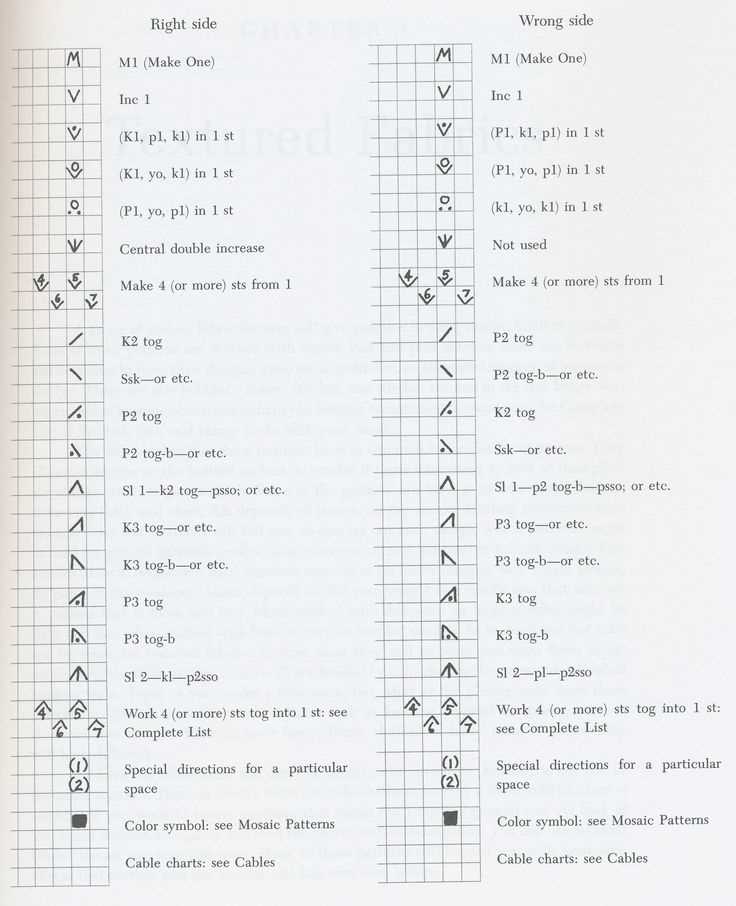When you first delve into the world of knitting, you may come across various abbreviations that can be confusing. One common abbreviation that you might encounter is PSSO, which stands for “Pass Slipped Stitch Over.” Understanding this abbreviation is essential for following knitting patterns and creating beautiful projects.
At its core, PSSO is a simple technique that involves passing a slipped stitch over another stitch on your knitting needle. This technique is commonly used in shaping projects, such as decreasing stitches to create a smoother edge or shaping a garment. PSSO is often used in combination with other knitting abbreviations, such as K2tog (knit two stitches together), SSK (slip, slip, knit), or YO (yarn over).
To perform the PSSO technique, you first need to slip a stitch from the left knitting needle to the right knitting needle without knitting or purling it. Then, you knit or purl the next stitch as instructed in the pattern. Finally, you pass the slipped stitch over the knitted/purled stitch by inserting the left knitting needle into the slipped stitch from left to right and lifting it over the knitted/purled stitch and off the right knitting needle.
PSSO is a versatile knitting abbreviation that adds texture and shaping to your projects. By mastering this technique, you can confidently tackle a wide range of knitting patterns and create beautifully finished pieces. Whether you’re a beginner or an experienced knitter, understanding the meaning of PSSO is an important step in enhancing your knitting skills.
Understanding the PSSO Abbreviation
The PSSO abbreviation is commonly used in knitting patterns and stands for “pass slip stitch over”. This abbreviation is used to instruct knitters on how to decrease stitches and create decorative effects.
When the PSSO instruction appears in a pattern, it means that you need to perform the following steps:
- Slip the next stitch on the left-hand needle onto the right-hand needle without knitting or purling it.
- Knit or purl the next stitch, depending on the pattern instructions.
- Insert the left-hand needle into the slipped stitch from the front of the work.
- Lift the slipped stitch over the knit or purled stitch and completely off the right-hand needle.
The PSSO abbreviation is commonly used in combination with other knitting techniques, such as decreases like knit two together (K2tog) or slip, knit, pass (SKP). It is important to carefully follow the pattern instructions and understand how the PSSO abbreviation is used in relation to other techniques to achieve the desired outcome.
By mastering the PSSO abbreviation, you can create unique and visually appealing designs in your knitting projects. Whether you are working on lace patterns or intricate stitch patterns, understanding the PSSO abbreviation will broaden your knitting skills and allow you to tackle a wider range of patterns.
How to Perform the PSSO Technique in Knitting
The PSSO technique in knitting is an essential abbreviation that stands for “Pass Slipped Stitch Over”. This technique is commonly used to decrease the number of stitches in your knitting project and create unique stitch patterns and designs.
To perform the PSSO technique, follow these steps:
- Knit or purl until you reach the stitch specified in your pattern that requires the PSSO technique.
- Slip the next stitch from the left-hand needle onto the right-hand needle without knitting it.
- Knit the following stitch or complete any other necessary stitches according to your pattern.
- Using the left-hand needle, lift the slipped stitch over the last stitch you just knitted and let it slip off the right-hand needle.
It is important to note that different patterns may have variations in how they require the PSSO technique to be performed. Make sure to read and follow the instructions in your specific knitting pattern.
The PSSO technique creates a decrease in your knitting project by reducing the number of stitches. It can be used to create decorative effects such as lace or texture patterns. By passing the slipped stitch over the last stitch, it secures the decrease and prevents any unraveling.
Practice the PSSO technique on a small swatch to become comfortable with the steps involved. With practice, you will be able to incorporate this essential knitting abbreviation into your projects with ease. Enjoy exploring the endless possibilities that the PSSO technique can offer in your knitting journey!
Importance of the PSSO Technique in Knitting Patterns
The PSSO (Pass Slip Stitch Over) technique is an essential component of many knitting patterns. It is used to decrease stitches and create various stitch patterns, including lace and cables. Understanding and mastering the PSSO technique is crucial for knitters who want to expand their repertoire of knitting patterns and create intricate designs.
When working on a knitting pattern, the PSSO technique is typically indicated by the abbreviation “PSSO” or a symbol resembling an arrow pointing to the right with a line through it. This indicates that you need to slip a stitch from the left needle to the right needle, knit the next stitch or stitches as directed, and then pass the slipped stitch over the knitted stitch or stitches.
The PSSO technique creates a decrease in the number of stitches on the needle, which can be used to shape the knitted fabric or create decorative elements. It is often used in lace knitting to create eyelets or in cable knitting to create twists and turns in the cable design.
Mastering the PSSO technique requires some practice and attention to detail. It is important to understand the proper positioning of the needles and yarn and to ensure that the tension remains consistent throughout the stitch. Practice with smaller swatches or simpler patterns before attempting more complex designs that incorporate the PSSO technique.
By learning and incorporating the PSSO technique into your knitting skills, you open up a world of possibilities in terms of the patterns you can create. From delicate lace shawls to intricate cable sweaters, the PSSO technique allows you to explore new techniques and create stunning finished projects.
Common Mistakes to Avoid When Using PSSO in Knitting
- Not understanding the abbreviation: PSSO stands for “pass slipped stitch over” and is used to decrease stitches in knitting. It is important to fully understand the abbreviation and how to execute it properly before attempting to use it in a project.
- Skipping the slip stitch: One common mistake is skipping the step of slipping the stitch before knitting the next stitch. This is necessary to create the decrease and pass the slipped stitch over.
- Confusing PSSO with other decreases: PSSO is just one type of decrease in knitting, and it is important to differentiate it from other decreases like K2tog or SSK. Mixing up the abbreviations or techniques can result in mistakes in the finished project.
- Pulling too tightly: When passing the slipped stitch over, it is important not to pull too tightly, as this can distort the tension of the stitches and make your work uneven.
- Miscalculating stitches: Another mistake is miscalculating the number of stitches needed for the decrease. It is important to read the knitting pattern carefully and understand how PSSO is used within the pattern instructions.
- Forgetting to count the slipped stitch: In some patterns, you may need to count the slipped stitch as a stitch before passing it over. Forgetting to count it can result in an incorrect stitch count and an uneven pattern.
- Not practicing: Like any knitting technique, using PSSO requires practice. It may take a few tries to get the hang of it and create neat, even decreases. Don’t be discouraged if your first attempt doesn’t turn out perfectly.
Avoiding these common mistakes and taking the time to understand and practice using PSSO in knitting will help you achieve better results and avoid frustration in your knitting projects.
Tips and Tricks to Master the PSSO Technique
The PSSO technique, or “pass slipped stitch over,” is a common knitting abbreviation that is used to decrease stitches and create decorative effects in your knitting projects. While it may seem intimidating at first, with a little practice and these helpful tips and tricks, you’ll be able to master the PSSO technique in no time.
- Use the correct stitch: When encountering the PSSO abbreviation in a pattern, make sure you know which stitch to slip. Typically, you will slip the next stitch onto the right-hand needle.
- Slip the stitch with care: To prevent stretching or distorting the stitches, gently slip the stitch from the left-hand needle to the right-hand needle without twisting it.
- Identify the stitch to pass over: After slipping the stitch, look for the stitch that needs to be passed over. It is usually the stitch that was worked before the slipped stitch.
- Pass the stitch over: Using the left-hand needle, lift the stitch that needs to be passed over the slipped stitch. Bring it over the slipped stitch and let it slide off the right-hand needle.
- Tighten the stitch: After passing the stitch over, make sure to tighten it slightly to maintain an even tension in your knitting.
Practicing the PSSO technique on a swatch or scrap piece of knitting can help you get comfortable with the movement and ensure you’re performing it correctly. Remember to take your time, as rushing can lead to mistakes and frustration.
Once you’ve mastered the basic PSSO technique, you can experiment with different variations and combinations to create unique patterns and textures in your knitting projects. The PSSO technique is often used in lace patterns, so don’t be afraid to try your hand at more complex designs as you become more confident.
By following these tips and tricks, you’ll be able to confidently tackle knitting patterns that feature the PSSO technique. With practice, it will become second nature, allowing you to create beautiful and intricate designs in your knitting projects.
Variations and Alternatives to PSSO in Knitting
While PSSO (Pass Slipped Stitch Over) is a common knitting abbreviation, there are variations and alternatives that you can use depending on your knitting pattern or preference. Here are a few alternatives to PSSO:
- SKP (Slip, Knit, Pass Slip Stitch Over): This is a variation of PSSO that involves slipping a stitch, knitting the next stitch, and then passing the slipped stitch over the knit stitch. It is commonly used as an alternative to PSSO in lace patterns.
- K2Tog (Knit Two Together): Instead of slipping a stitch, you can knit two stitches together. This creates a decrease and is often used as an alternative to PSSO in various knitting patterns.
- SSK (Slip, Slip, Knit): This is another decrease method that involves slipping two stitches one by one, then knitting them together through the back loops. It is commonly used as an alternative to PSSO in shaping garments.
It is important to note that different knitting patterns may specify specific decrease methods, so always refer to the pattern instructions to determine the correct abbreviation to use. Additionally, it is always helpful to practice and become familiar with various decrease methods to expand your knitting skills and create different textures and designs in your projects.
Incorporating PSSO in Different Knitting Stitches and Patterns
When it comes to knitting, understanding and incorporating common abbreviations like PSSO can help you create a wide variety of stitches and patterns. Below are a few examples of how to incorporate PSSO in different knitting stitches and patterns:
Garter Stitch:
In garter stitch, PSSO is often used to create a decrease. Here’s how you can incorporate PSSO in garter stitch:
- Knit the first stitch.
- Insert the tip of the right needle into the second stitch on the left needle.
- Knit the second stitch.
- With the tip of the left needle, lift the first stitch over the second stitch and off the right needle.
- Continue knitting the remaining stitches as normal.
Stockinette Stitch:
In stockinette stitch, PSSO can be used to create a left-leaning decrease. Here’s how you can incorporate PSSO in stockinette stitch:
- Knit to the point where you want to create the decrease.
- Slip the next stitch from the left needle to the right needle knitwise.
- Knit the next stitch.
- With the tip of the left needle, lift the slipped stitch over the knit stitch and off the right needle.
- Continue knitting the remaining stitches as normal.
Ribbing:
In ribbing, PSSO can be used to create a decrease while maintaining the ribbing pattern. Here’s how you can incorporate PSSO in ribbing:
- Knit the first stitch.
- Purl the next stitch.
- Insert the tip of the left needle into both stitches from left to right.
- Knit the two stitches together.
- With the tip of the left needle, lift the first stitch over the second stitch and off the right needle.
- Continue the ribbing pattern by knitting or purling the next stitches as instructed.
These are just a few examples of how PSSO can be incorporated into different knitting stitches and patterns. By familiarizing yourself with this abbreviation, you’ll be able to tackle a wide range of knitting projects with ease.
Examples and Patterns Using PSSO in Knitting Projects
Once you understand what PSSO means in knitting, you can start incorporating it into your knitting projects. Here are a few examples and patterns that use PSSO:
Garter Stitch Scarf
This simple garter stitch scarf pattern is perfect for beginners and incorporates the PSSO technique to create a decorative decrease. Follow these steps:
- Cast on 30 stitches.
- Knit every row for the desired length of the scarf.
- When you reach a decrease row, knit the first two stitches together.
- Slip the next stitch knitwise.
- Pass the slipped stitch over the knit stitches and off the needle (PSSO).
- Continue knitting in garter stitch until the scarf is the desired length.
- Bind off and weave in any loose ends.
Cable Knit Hat
This cable knit hat pattern incorporates PSSO to create a clean decrease at the top of the hat. Here’s how you can use PSSO in a cable knit hat pattern:
- Start with a ribbed brim pattern of your choice.
- Create a cable pattern of your choice, crossing the cables as desired.
- When you reach a decrease round, follow these steps:
- Knit to two stitches before the first cable.
- Knit these two stitches together.
- Slip the next stitch knitwise.
- Pass the slipped stitch over the knit stitches and off the needle (PSSO).
- Continue with the cable pattern.
- Continue decreasing in this manner until a few stitches remain.
- Switch to double-pointed needles and knit the remaining stitches.
- Bind off and weave in any loose ends.
Lace Shawl
This lace shawl pattern is a beautiful project to showcase intricate stitch patterns and lacework. Incorporate PSSO to create smooth decreases along the edges of the shawl. Here’s how:
- Start with a lace pattern of your choice.
- When you reach a decrease row, follow these steps:
- K2tog (knit 2 stitches together).
- Wrap the yarn around the needle.
- Slip the next stitch knitwise.
- Pass the slipped stitch over the knit stitches and off the needle (PSSO).
- Continue with the lace pattern.
- Continue decreasing in this manner as indicated by the pattern.
- Finish the shawl according to the pattern instructions.
These examples demonstrate how PSSO can be used in various knitting projects to create neat and decorative decreases. Incorporate the PSSO technique into your knitting repertoire to add an extra touch of sophistication to your projects.
FAQ:
What does PSSO mean in knitting?
PSSO stands for “pass the slipped stitch over” in knitting. It is an abbreviation used in knitting patterns to instruct the knitter to pass a previously slipped stitch over the stitch that was just worked.
When do I need to use PSSO in knitting?
You need to use PSSO in knitting when a pattern instructs you to do so. It is commonly used to decrease stitches and create various stitch patterns. The specific instructions for using PSSO will vary depending on the pattern you are following.
Is PSSO difficult to learn for a beginner knitter?
PSSO may be a bit challenging for beginner knitters, especially if they are new to working with decreases. However, with practice and patience, it can be mastered. It’s always helpful to start with simple patterns that use PSSO and gradually progress to more complex designs.
What other knitting abbreviations should I know?
There are many knitting abbreviations to familiarize yourself with. Some common ones include K (knit), P (purl), CO (cast on), BO (bind off), st (stitch), RS (right side), WS (wrong side), PM (place marker), and M1 (make one). It’s a good idea to keep a knitting abbreviation guide handy while working on different patterns.
Are there any alternative methods to PSSO?
Yes, there are alternative methods to achieve similar results as PSSO. One alternative is to do a “slip-slip-knit” (SSK) decrease, where you slip two stitches individually, knit them together, and pass them over. Another option is to use a “knit 2 together” (K2tog) decrease, where you simply knit two stitches together as one. The specific method to use will depend on the pattern and the desired effect.
Can you provide examples of knitting patterns that use PSSO?
Many knitting patterns use PSSO in various ways. For example, lace knitting patterns often include PSSO to create decorative decreases. Cable knitting patterns may use PSSO to cross stitches over each other. Sweater patterns may use PSSO to shape the neckline or sleeves. It’s always good to carefully read and follow the instructions in the pattern you are working on to determine where PSSO is used.


